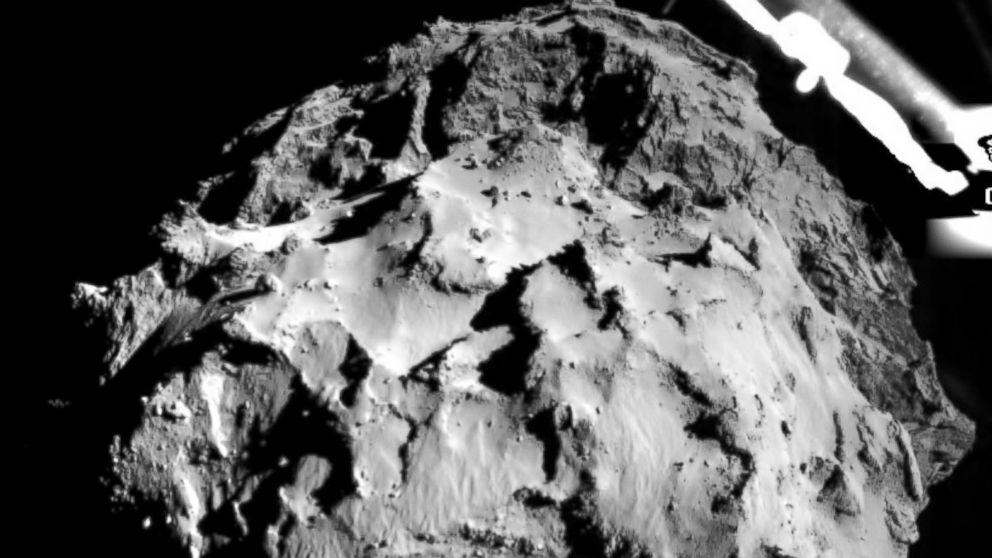How Rosetta's Comet Got Its Rubber Duck Shape
What the European Space Agency learned about Comet 67P.

— -- After catching up to the rubber duck-shaped comet 67P last year, the European Space Agency's Rosetta probe is now learning more about how the icy body was formed.
The comet's unique shape is the result of two comets colliding at a low speed during the early Solar System, according to Rosetta scientists. The finding was reached after scientists analyzed high resolution images taken of the distinctly shaped comet and examined its layers of material.
"You can imagine the layering a bit like an onion, except in this case we are considering two separate onions of differing size that have grown independently before fusing together," Matteo Massironi,a member of the OSIRIS imaging team from the University of Padova, Italy, said in a statement. The results of the study were published in the journal Nature.
Rosetta's Philae lander made history on November 12 when it landed on the speeding comet, marking the culmination of a 10-year, 4 billion-mile journey.
After a bumpy landing, Philae later lost power before going into hibernation. Scientists heard from Philae again in June of this year when the comet lander woke up and began transmitting information back to Earth.




